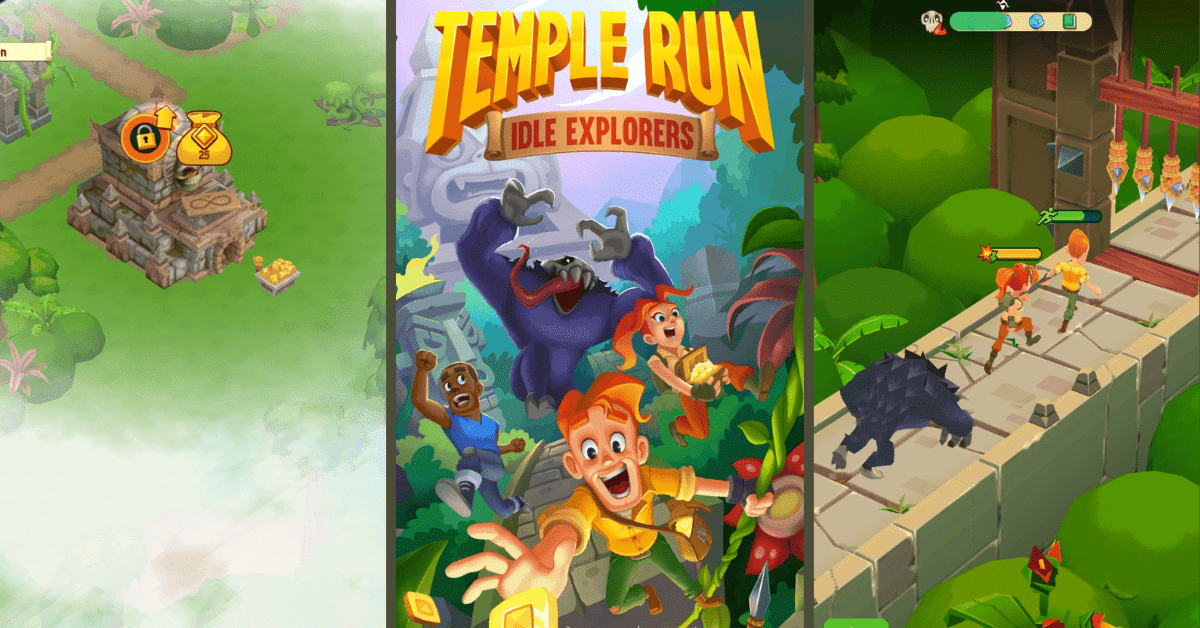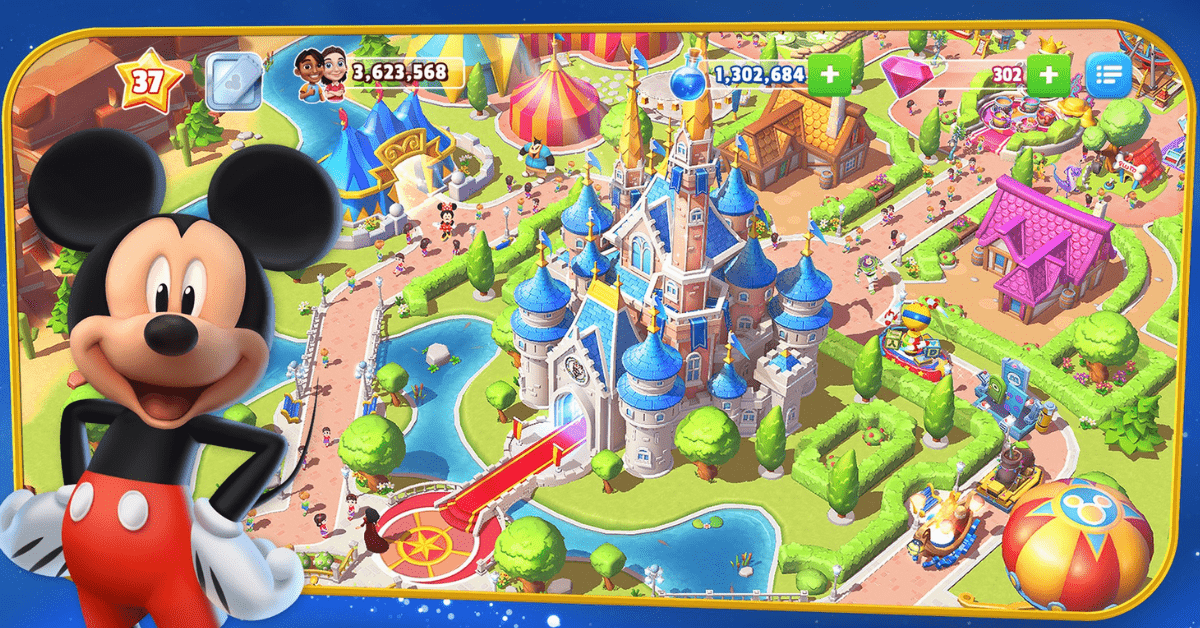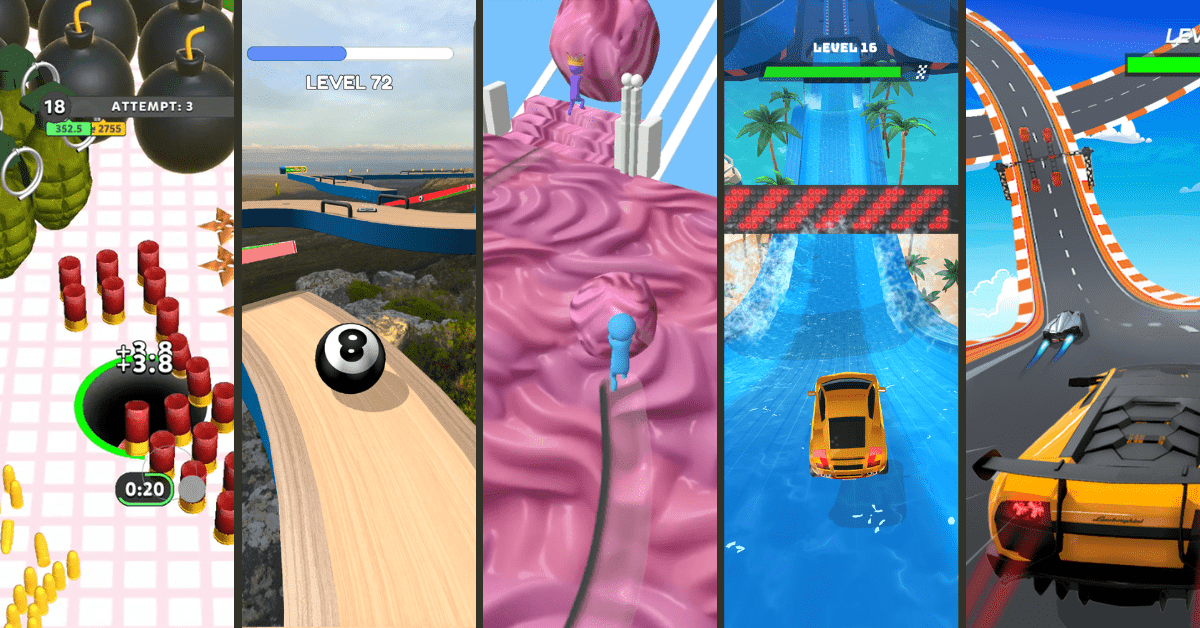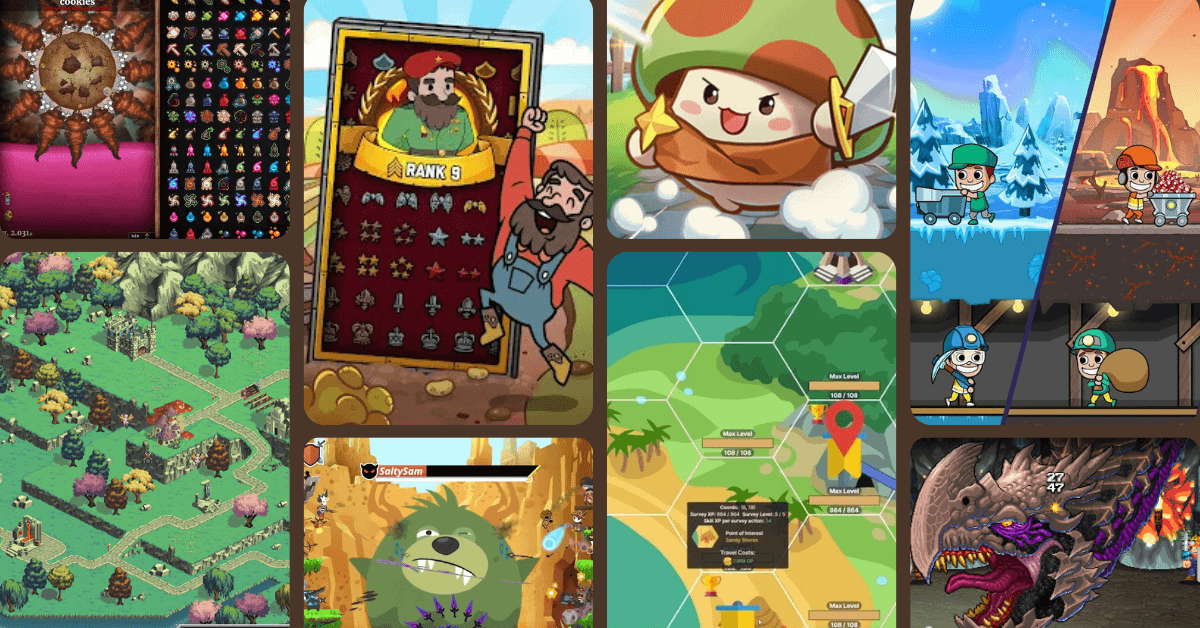Did you know that Imangi has released a new Temple Run game?
If you’re expecting another endless runner, you’ll be quite surprised. In collaboration with Bigfoot, Imangi took a different direction with Temple Run: Idle Explorers. As you might guess from the title, it’s an idle game.
Is this mobile game as good as other Temple Run games? Will existing fans like it? Is it going to be profitable for Imangi?
To find out, I analyze Idle Explorers’ gameplay, game mechanics, monetization features, and more!
A Departure from the Classic Temple Run Games
The Temple Run series achieved record-breaking success for Imangi, making them one of the most popular games of all time.
Even more than a decade in, they’re achieving impressive results, which you can read about in my dissection of Temple Run 2.
But Imangi decided to move in a different direction and try something new with Temple Run: Idle Explorers. It has a similar vibe and theme as the classic Temple Run, but it’s not an arcade runner game. Idle Explorer is an archeology-themed idle clicker game with adventure and RPG elements.
This is a risky move.

On one side, you have many fans of the Temple Run brand and the running games. Getting them interested in an idle game could be a tough sell. But on the other hand, there’s a new audience of casual, and even mid-core gamers, Imangi could tap into.
After analyzing Idle Explorers, it seems that Imangi thought about all of that and I suspect this bold move might just pay off. There are game features that cater to existing Temple Run fans as well as new and exciting idle gameplay that might attract many new casual players.
I explain all of them in depth in the following section.
Temple Run Idle Explores: Game Mechanics and Progression Systems
In Idle Explorers, players search for ancient artifacts, collect them all to save the world, and get rich in the meantime. It’s an epic expedition full of idols, treasures, exploration, and villains. Players command a team of new and familiar Temple Run characters, upgrade their skills, hire workers, and manage dig sites and resources.
Because this is an idle clicker game, players can make progress and earn currency by performing simple actions. Then, they use that currency to upgrade, maximize profits, and automate everything, which is why such games are called idle games.
That offers a casual, no-pressure gaming experience players can come back to any time and pick up where they left off. There’s constant growth and no way to lose in idle games, which is one of the reasons they’re so satisfying.
A simplified gameplay loop in Idle Explorers would be: unlock a building – hire workers and automate – collect currency – unlock and automate more buildings – complete tasks – craft artifacts. That completes one dig site and the same process is repeated for the next one and so on.
However, this game has plenty more to offer.
Let’s explore all of these concepts in more detail.

Buildings
Just like in most other idle games, the main sources of income in Temple Run: Idle Explorers comes from buildings. Because of that, buildings are at the core of Temple Run: Idle Explorers’ gameplay.
To complete each portion of the map, players unlock buildings on various dig sites and earn coins from them. Buildings are acquired either by purchasing them or for free by completing runs (more on runs later on).
To maximize a building’s output, players need to assign a manager (game character) to automate the building as well as hire workers. Assigning a manager is free while hiring workers requires coins. Also, choosing the character to assign as the manager to a specific building is a strategic decision and can maximize its output because each character serves as a multiplier.
The coins players earn from buildings are used to hire more workers, and subsequently unlock more buildings. There are also different levels to buildings that are achieved after hiring a certain number of workers.
Expansion
There are multiple expeditions per map. In each one, players operate about 4-5 buildings. When they complete it, they move on to the next one and repeat the process.
Even though basic gameplay and tasks stay the same, completing levels and traveling through the map gives a sense of progress.

Wait Timers
Another important aspect of these buildings is wait timers.
Coins don’t come easy in Idle Explores – players need to wait to earn currency from dig sites. Each building has different wait times, as well as a different output. For example, within a dig site, there are buildings with faster timers, but lower output, and ones with slower timers that produce a more substantial amount of coins.
Luckily, those timers don’t stop when players exit the game.
That’s the most prominent idle aspect of the game – players earn money from dig sites, even when they’re not actively playing.
Exponential Growth
Each purchased building within one dig site produces an exponentially higher number of coins. For example, the first one produces 20k, the second 20 million, the third one 200 million, and the fourth one 2 billion.
But as I mentioned, those that produce more coins have slow timers. Also, the buildings get exponentially more expensive as well as the workers. Such rapid and exponential growth is another classic idle feature. It’s present in both cost and earnings.
Idle and tycoon games are also popular because of resource management. Here’s how it works in Temple Run: Idle Explorers.

Resource Management in Temple Run: Idle Explorers
The resource management aspect of Temple Run Idle Explorers is simplified enough so that casual players can enjoy it, but it’s complex enough to add depth to the game and make it engaging long-term.
Players need to achieve the balance between investing in more workers to maximize buildings’ output, purchasing more buildings, upgrading characters, and completing tasks.
These are the primary resources in Temple Run: Idle Explorers.
Coins
Coins are the game’s soft currency and players can obtain them through buildings or get them as free rewards.
Gems
Gems are the game’s premium currency. It’s a scarce resource, but it opens up many doors. Players can use gems to purchase necessary resources like scrolls and chests.
Scrolls
Scrolls are used to upgrade game characters and make them more powerful in runs. Players can earn them as a reward or by completing runs.
Tokens
Character tokens are used to tier up game characters. Most commonly, players earn them as a reward for completing tasks.
Tasks in Temple Run: Idle Explorers
Even though resource management can get tricky, it’s made easier with the inclusion of tasks. Tasks guide players through the game, i.e., through each level and map. That way, players don’t need to think about what’s coming next or get lost in strategic decisions. It also helps them prioritize different resources and challenges.
Completing all tasks means they’ve completed part of the expedition, which is essentially one level. Some examples of tasks are things like collecting a certain amount of coins, hiring a certain number of workers, collecting an x amount of scrolls, etc.
This is the game’s main progression system. Players are constantly getting new tasks that keep them busy – as soon as one is completed, another one pops up.
To make the experience even more rewarding, players get free gifts for completing tasks.
The final piece of the puzzle for completing each level is the artifacts.

Artifacts
To complete each portion of the map, players need to collect pieces of an artifact and craft it. It represents a relatively short-term goal for players and it’s repeated for every dig site.
Also, each artifact is a multiplier for buildings. For example, once crafted, the ceremonial dagger increases coin production 2x.

Characters in Temple Run: Idle Explorers
We can’t talk about Temple Run: Idle Explorers without doing a deep dive into its characters. They’re another essential part of this game and Temple Run fans will recognize many of them.
This idle game features familiar characters like Guy Dangerous and Scarlett Fox, in the role of explorers and runners. This is one of the ways the old Temple Run games are tied to this new one.
On top of that, there are new characters that players can get to know – each with a unique personality and skill. There are also different types of characters – heroic, clever, and brave.
Players can assign characters as building managers and each of them provides a multiplier.
The goal is to unlock and collect all the characters.

Character Collection
Including this feature is a smart choice considering character collection is one of the most used meta layers among top-grossing games, according to SensorTower. Many players love working towards long-term goals and enjoy a sense of completion, which is why this meta-layer is so popular.
Just like in many RPGs and similar core games, characters have varying levels of rarity. For example, common, rare, and epic. Naturally, players usually strive for acquiring the rarest and most exclusive characters.
There are also character collections players can complete, which is another long-term goal that can extend playability and retention.
On top of that, skins and gear for characters will be available soon, which will inevitably open up new revenue opportunities. Cosmetic items are a common monetization feature because many players enjoy customizing characters and would pay real money for exclusive wearables and gear.

Leveling Up Characters
By collecting scrolls, players can level up characters. There’s also the option to tier up by collecting enough tokens.
This is one of the many progression systems in Temple Run: Idle Explorers – players constantly need to level up and upgrade each of the collected characters to advance through the game. Achieving that gives them a sense of success and can motivate them to play more.
The goal of leveling up characters is tied to runs, the final piece of the Idle Explorers puzzle.
Runs in Temple Run: Idle Explorers
What sets Temple Run: Idle Explorers apart from other idle games is the addition of running. However, it’s not the type of running one would expect from a Temple Run game, but rather an idle version of runs.
Here’s how they work.
The goal of these runs is to complete an obstacle track without getting caught by the demon monkey. Players can choose multiple characters (runners) to run and their skill level, type, and abilities determine how successful they’ll be.
That’s why players need to strategically choose the runners and their placement, i.e., arrange them in order. At least one runner needs to make it to win.
But players don’t get to control the running. Because this is an idle game, and not an arcade game, players make strategic decisions and then sit back and watch.
My guess is that Imangi wanted to incorporate this feature because the Temple Run brand is synonymous with running. Also, many players expect this new game to be similar to the original Temple Run. Including some running aspects appeases existing fans, but also allows Imangi to branch out and try something new.
What’s good about it is that it doesn’t feel random or out of place. There’s a purpose to running and it’s seamlessly incorporated into gameplay.

Running with a Purpose
As I mentioned before, completing runs can unlock buildings, which is its main purpose.
That way, players can avoid spending large sums of coins. However, the runs get progressively harder, i.e., runners are not strong enough to survive them. This is why leveling up characters is a key part of gameplay.
There are also run challenges where players get rewarded with scrolls. They’re like mini-games and help players get a decent number of scrolls to upgrade characters and perform better during runs.
Because characters play such a key role in Temple Run: Idle Explorers, we can characterize it as an idle RPG game. Another RPG aspect of this game is the storyline that ties everything together.

Narrative
As soon as the game starts, players are met with memorable game characters and a guide that turns out to be a villain. The storylines are lighthearted, funny, and make the gameplay experience more enjoyable.
The narrative also helps players to establish emotional connections with characters and the game itself.

Temple Run: Idle Explorers Monetization
One of the reasons why Imangi chose to pivot to idle games might be that this genre is easier to monetize than runner games, generally speaking.
That’s because casual idle games like Temple Run: Idle Explorers are fairly complex and have tons of progression systems, and meta-layers create more monetization opportunities.
Idle Explorers primarily uses rewarded video ads and in-app purchase offers to monetize its players. But there’s also a VIP subscription option. We call that hybrid monetization – a mobile gaming trend that utilizes more than one monetization model to maximize profits.

Rewarded Video ads
Opportunities to watch a rewarded video ad in Idle Explorers appear when coming back to the game and as an occasional balloon in the sky. Yes, you’ve read that right. I’ll explain how the balloon rewarded ads work in a bit. By opting in to watch an ad, players get valuable rewards. Most commonly, coins and scrolls.
They’re based on players’ desire to make progress faster, which is why rewarded video ads are perfect for idle games.
For example, the player is trying to acquire 2 billion coins to unlock the next building. But the wait timers are slow and they need to wait a long time to collect enough coins. Then a balloon appears with an offer to watch an ad and get 2 billion coins for free. That means instant progress that eliminates wait times.
This is why players love these offers and don’t mind watching ads.

In-app purchases
The desire to speed up progress is also behind some in-app purchase offers. For example, players who want to skip ahead can do so by purchasing time warps.
Character-based offers include scrolls (for upgrading characters), and tokens (tier up characters). This is a great example of how adding a mid-core meta layer like leveling up a character creates additional monetization opportunities.
Players can also purchase gems, the game’s premium currency, and chests. In this case, chests work like loot boxes because players don’t know what exactly they’ll get.

What’s interesting is that players can claim free chests each day from the game’s store. That’s the perfect way to get players used to this item, which might result in a purchase later on.

VIP Subscription
Players who want even more content and exclusive items can purchase a VIP subscription.
Here are some of the benefits:
- Ad-free experience
- Exclusive Discord access
- Store discounts
- The ability to skip runs
- Monthly rewards
- Exclusive characters
That’s a pretty good deal considering the monthly subscription costs less than $4.
With the addition of subscriptions, Imangi covered all of its bases and has set up plenty of different ways to monetize its users. It’s too early to tell whether this strategy works because Temple Run: Idle Explorers is still new. And the main goal during this stage is to acquire as many users as possible.
User Acquisition & Marketing
To complete this Idle Explorers analysis, I wanted to touch on the game’s marketing strategy, i.e., how it acquires players.
Just like with its previous games, I’m guessing Imangi relies a lot on organic user acquisition. It makes sense – Temple Run is a familiar and globally popular brand that needs no introduction.
Temple Run: Idle Explorers even features the same logo as the previous games.
I bet Imangi is counting on existing Temple Run players and fans to download this new game. That alone can create a decent user base for Idle Explorers, considering how many Temple Run fans there are.
However, Idle Explorers has the potential to attract a new audience that’s not necessarily familiar with Temple Run. Because of that, it might be beneficial to utilize paid user acquisition a bit more and try to reach new players.
Temple Run Idle Explorers: A Summary
Even though it’s a departure from the original Temple Run series, Idle Explorers is a well-crafted game that’s surely going to leave a mark in the casual and idle space.
It will be interesting to see how this game evolves – we’ll keep you posted!







Comments